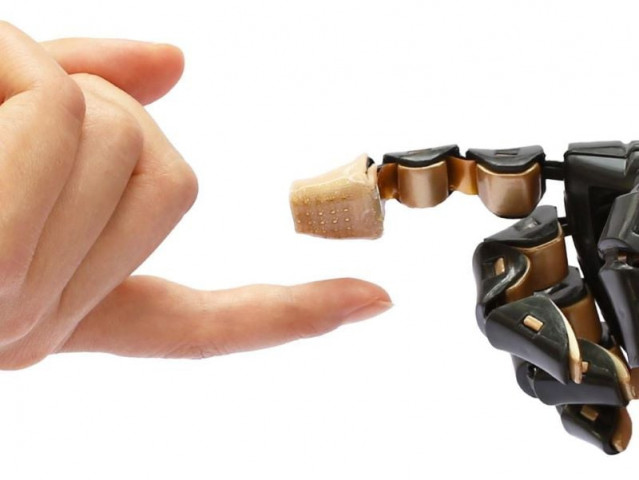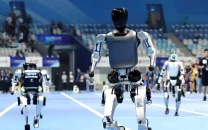Feeling the Future: China Designs Lifelike 3D Electronic Skin
With its intricate 3D distribution, sensory receptors in human skin adeptly perceive external forces and strain

A team of Chinese scientists has created the world's first bio-inspired electronic skin with a 3D structure that mimics three mechanical signals found in human skin.
With its intricate 3D distribution, sensory receptors in human skin adeptly perceive external forces and strain. By mimicking this spatial distribution, researchers from Tsinghua University developed an e-skin that replicates the structure of human skin, featuring its own "epidermis," "dermis" and "subcutaneous tissue."
This e-skin is capable of achieving simultaneous decoding and perception of three mechanical signals -- pressure, friction and strain -- at the physical level, according to the study published in the journal Science recently.
"A patch of the e-skin, comparable in size to the tip of an index finger, is equipped with 240 metal sensors, each ranging from two to three hundred micrometers in size," said Zhang Yihui, the corresponding author of the study.
"Their spatial arrangement closely mimics the distribution of tactile receptor cells within human skin," Zhang added.
The sensors amass signals that are meticulously processed and subsequently refined through deep learning algorithms, allowing the biomimetic skin to discern the texture and contours of objects with remarkable precision.
It exhibits a remarkable pressure position perception resolution of about 0.1 millimeters, rivaling the sensitivity of genuine human skin, according to the study.
The e-skin holds the potential to be integrated into the fingertips of medical robots for precise early-stage diagnostics and interventions. It can also be used as a band-aid to offer real-time monitoring of vital health metrics, including blood oxygen saturation and heart rate, according to Zhang.



















COMMENTS
Comments are moderated and generally will be posted if they are on-topic and not abusive.
For more information, please see our Comments FAQ